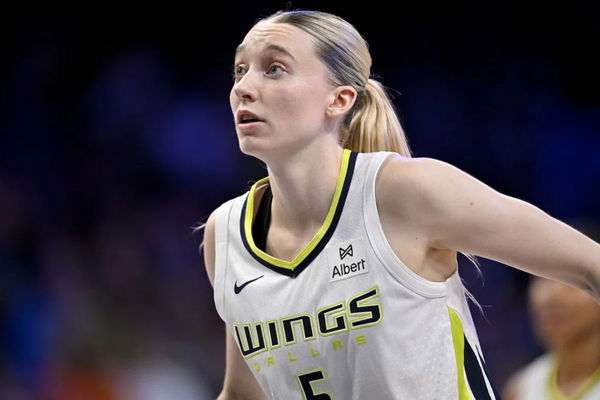

When Olivia Miles, a projected top-five pick, announced her decision to enter the transfer portal and return to college for another year instead of declaring for the 2025 WNBA Draft, it shocked many. But for her, the choice came down to a key factor: the WNBA’s current rookie salary structure.
Watch What’s Trending Now!
While top picks in the league earn around $76,000 in their first year, Miles can capitalize on lucrative NIL deals by staying back and potentially benefit from the upcoming NCAA House settlement and revenue-sharing model. Additionally, this move positions her to enter the league under more favorable conditions, as the current CBA is set to expire, and the WNBPA will soon negotiate a new deal. So, it makes sense why Miles and others, including Azzi Fudd, chose this strategic path.
But if you’re thinking basketball is the only sport witnessing this change, you might be wrong. This trend is also evident in college football – the number of NFL draftees has dropped to 70 from 128 in just four years. Although most athletes don’t explicitly cite NIL deals as the reason for delaying their professional debut, the extra time allows for better development and greater financial support, especially in sports like golf and baseball. So, clearly, NIL deals are no longer just perks; they’re reshaping the road to the pros.
ADVERTISEMENT
Why the NIL wins out (for now)?
With access to lucrative endorsement opportunities, even in non-revenue sports, NIL has transformed high-profile athletes like Olivia Dunne and Ryan Williams into social media and brand powerhouses. Just look at the NCAA’s NIL Assist dashboard: the average athlete is raking in over $21,000, clearly proving NIL’s reach is both broad and booming.
Gone are the days when players pursued a one-and-done freshman season. Now, athletes are following a career similar to that of Cooper Flagg, who is always mulling over adding more seasons. And why not? His estimated NIL valuation sits at a whopping $4.8 million, backed by deals with New Balance, Gatorade, Fanatics, Cort Furniture, and The NIL Store. So clearly, his college earnings can now rival rookie NBA contracts, at least in the short term.
ADVERTISEMENT
And, it’s not just about men’s sports, with $1 M+ NIL deals available at programs like UConn, LSU, and Iowa, even women athletes no longer need to rush into the pros. Take Flau’Jae Johnson, for example—she’s already making $1 million in college, while rookie salaries in the WNBA remain capped at around $78,000. To sum it up, financial security and brand-building are the major motivators. However, athletic readiness also has its own weight in the equation. So, while this trend benefits the NCAA, with older, more experienced rosters returning for another season, you might assume the WNBA is suffering from it. Right? Wrong!
Top Stories
DK Metcalf Awaits Huge Punishment From NFL After Controversial Incident vs Detroit Lions

Jared Goff Calls Out Refs’ Multiple Mistakes After Lions’ Loss

Dana White Cuts Former MMA Champ From the UFC, Again

Prayers Pour In From Terrell Owens as 275lbs Former Cowboys Player Announces Major Health News

Dak Prescott Publicly Accuses Cowboys Locker Room of Giving Up After Jerry Jones’ 1-Word Reaction

Chiefs’ Chris Oladokun Reveals Patrick Mahomes’ Gesture After Titans Game Amid Gardner Minshew’s Injury

ADVERTISEMENT
The WNBA’s rookie landscape “Reset” amid NIL deals
If you’re talking about women’s pro leagues, well, they’ve found a way out. It’s by creating opportunities for undrafted rookies, and no one’s done it better this season than the Phoenix Mercury. It all started when Mercury loaded up with big names like Satou Sabally and Alyssa Thomas to join All-Star Kahleah Copper.
While their core looked powerful on paper, they still had to fill out a 12-player roster, and they had no 2025 draft picks. To make matters worse, Copper was already expected to miss the entire season due to a knee issue. So, you’d expect Phoenix to struggle with limited depth and major injuries. Instead, they’ve stunned the league with a 6-4 record, sitting fourth overall, even ahead of the two-time champion Las Vegas Aces. The secret? Four undrafted rookies who’ve brought life to the Mercury—guards Monique Akoa Makani, Lexi Held, Kitija Laksa, and forward Kathryn Westbeld.
Not only have they stepped up, but they’re producing, with all four averaging over 7 points per game. Just consider that Held is Phoenix’s third-leading scorer, averaging 8.9 PPG. And it doesn’t stop there. The Mercury have also signed Morgan McConnel and Murjanatu Musa, two more undrafted rookies waiting to make their mark.
ADVERTISEMENT
While it’s rare to see a team go all-in on undrafted players like this, somehow, it’s working. Even without two of their stars (Alyssa Thomas out due to a Calf injury), Phoenix is hanging with the best, all while rewriting what it means to build a winning roster. Well, that’s just about undrafted rookies, but the ones that come up with the 2025 draft are even stronger, showing the overall readiness that the NIL has helped them with.

Imago
Credits: Imagn
Just look at this season’s Rookie of the Year race – you’ve got Kiki Iriafen and Sonia Citron going head-to-head with No. 1 overall pick Paige Bueckers. While Citron, the third overall pick from Notre Dame, is averaging 14.3 points and 4 rebounds a game, making her one of the most consistent performers, Iriafen, the No. 4 pick from USC, won Rookie of the Month for May, putting up a double-double average of 13.9 points and 10.1 rebounds. Her rebounding numbers even rank among the league’s best.
ADVERTISEMENT
What’s impressive is how quickly these players are adjusting—just nine games in, and they’re already contenders. While most rookies take a month or more to get used to the W’s physicality, these players are proving they’re more than ready. That’s one reason the league isn’t feeling the absence of some early draftees still playing NCAA ball.
But while some athletes prefer NIL deals and staying in school, others, like Dallas Wings guard DiJonai Carrington, believe sponsorships at the pro level are evening out the playing field. And she’s got a point, as evident from A’ja Wilson’s richest endorsement deal in league history—a six-year, $20+ million contract with Nike. And, with a new CBA on the horizon, there’s growing hope that rookie contracts, revenue sharing, and increased media rights deals will better reflect the actual value these athletes bring to the game.
ADVERTISEMENT
ADVERTISEMENT
ADVERTISEMENT

